Periodically through this journal I’ve voiced a complaint that many of our RS days were overfilled (or at least I’ve complained in my mind) and, although our day in Alice Springs (Mparntwe in the local Arrernte Language {pronounced M’bun-twa and meaning watering place}) was stuffed to the brim, the schedule was reasonable under the circumstances. Everything we did was interesting though if we’d missed one, I doubt it would have bothered me and I certainly would have been Heloise (nun the wiser).
I acknowledge that I am on the land of the Arrernte People. I acknowledge their custodianship. The Dreaming is still living. From the past, in the present, into the future. Forever. I would also like to pay respect to the Elders past, present, and emerging and extend that respect to other Aboriginal people present.
Alice Springs Desert Park
After our 06:45 breakfast we boarded our bus and set out to the west and the mountains called Tjoritja (or that appear on most maps as the West MacDonnell Ranges). Our destination was Alice Springs Desert Park where we were to explore the flora and fauna of desert landscapes. (Keep in mind that my relations with most of these plans and animals has me classifying them as ‘dunnos.’)
An informational sign in the park tells of six connected desert habitats. I recall experiencing three of these – Desert Rivers, Sand Country, and Woodlands – on our visit. We began our walk passing (perhaps appropriately) this ghost gum tree.
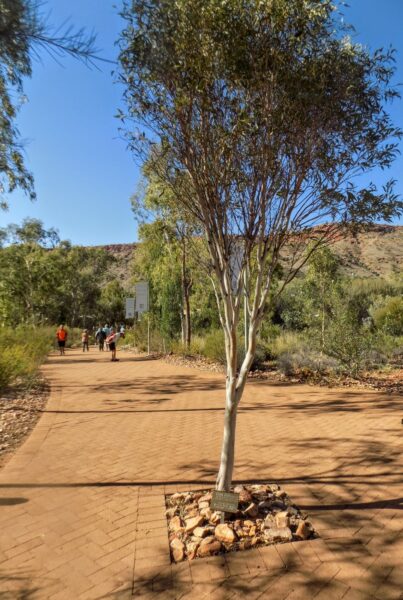
There’s nothing special about this particular ghost gum but the species of tree is of particular importance to the First People of Central Australia. I know this is a ghost gum because of the identifying sign at its base that also says the tree’s sap “can be applied to burns, sores and wounds to help them heal.” But the tree’s significance runs much deeper than its mere medicinal and practical roles which include making bark infusions to treat colds and chest infections and its use as firewood or the use of the bark’s white powder as a pigment to whiten headbands for ceremonial use.
In addition to these uses, the trees also reflect the moonlight making them appear to glow at night and the people believe this signifies the presence of living spirits thus connecting them to their Dreaming stories of the Wild Dog
and the Caterpillars both of which were crucial in shaping the area’s landscape.
As we would in all such places, we had the chance to see birds. Lots of birds. Of course, this makes sense. The continent can be home to 800 or so species of birds but the important element is that something on the order of 350 of them are endemic meaning they’re found nowhere else on Earth. You can count this bustard among them.
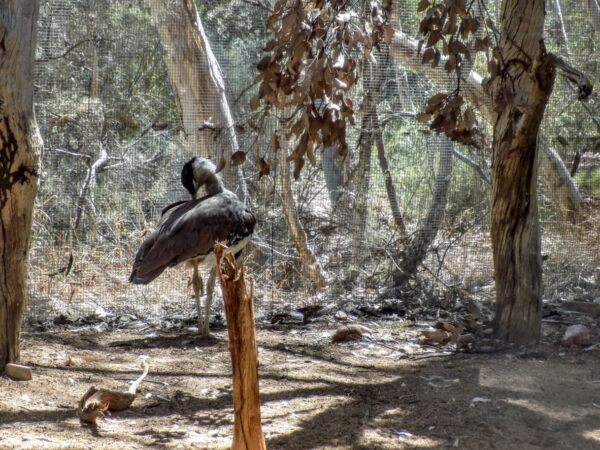
(I’m assuming , of course that its parents were properly mated and that it’s not a bastard bustard.) And for abiding this joke, here’s a not so great picture of a somewhat more colorful budgerigar.
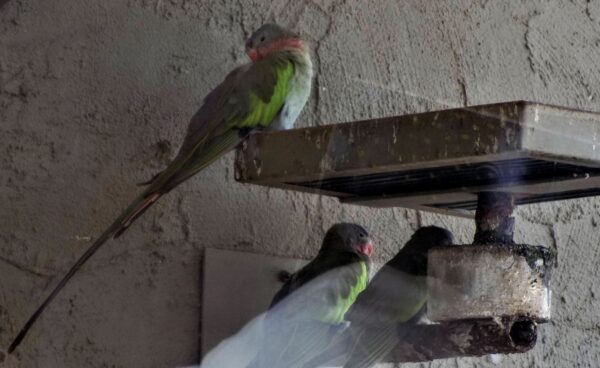
Something else you see a lot of in these sanctuaries and habitats are reptiles. Australia has 869 known species of reptiles and, given their inability to fly, it should be unsurprising that more than 800 of them are also endemic. Here’s one of my favorites,

the thorny devil. (And I don’t know anything about its mating habits or when it becomes a horny thorny devil.)
From there it was on to the Woodlands where the two stars are, of course, “The Mighty Red” and the emu (pronounced ee-myoo). I can tell you that the red kangaroo is the world’s largest living marsupial.
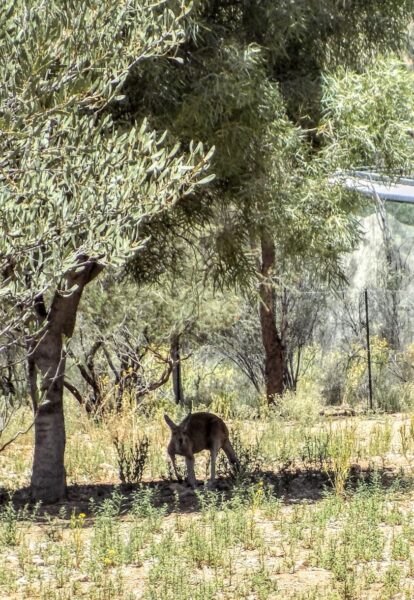
I can tell you that emus are more closely related to rheas than they are to ostriches but I can’t tell you whether this emu
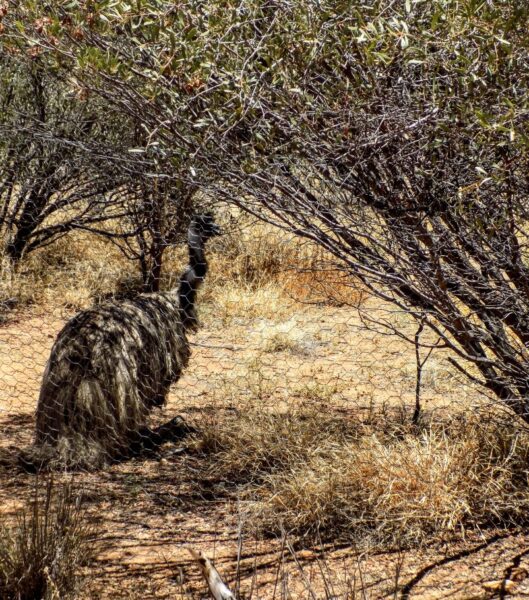
has ever met Doug or can help you customize your auto insurance.
Next stop Simpsons Gap
After lunch at the Desert Park we made the short 20-minute drive to Rungutjirpa or Simpsons Gap. If you watched the video with Aunty Doris Stuart Kngwarreye above, she mentions a gap where people couldn’t enter without permission from an elder. (Recall my speculation about John Stokes.) Because her focus is on the Wild Dog Dreaming, I don’t know if she was referring to this place or another gap nearby. I do know that this gap is of great significance for the Arrernte People because it’s the home of giant goanna ancestors and is a crossing point for several songline trails.
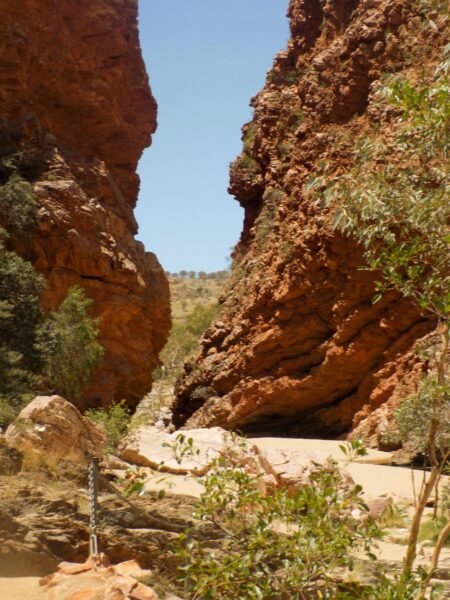
It was an interesting place but, even though the park is in the Tjoritja National Park and is jointly managed by a collaboration between the territorial government and the Arrernte People which implies permission, having learned what I did afterward, I am a little less comfortable with our stop there than I was in the moment.
The Royal Flying Doctor Service
Those who have been reading along and paying particularly close attention will remember that the RFDS has a tourist facility on Stokes Wharf in Darwin that some in the RS group decided to visit and some, like me, gave a pass in the moment because we knew we were scheduled to visit a similar facility in Alice.
The RFDS didn’t begin in Alice. In fact, it didn’t begin in the Northern Territory. The RFDS was the brainchild of Reverend John Flynn –
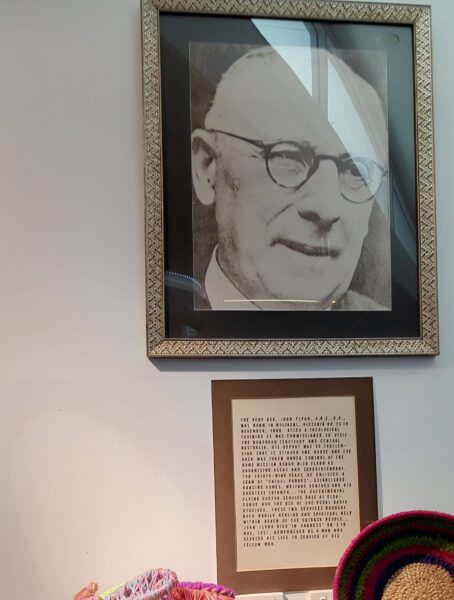
a Presbyterian minister who had established the network of ten Australian Inland Mission nursing clinics in the NT. Working with Hudson Fysh – one of the founders of QANTAS, the first flight of this aerial ambulance service launched from Cloncurry, Queensland on 17 May 1928.
The service gradually expanded throughout the 1930s and Alice Springs was the site for the service’s first independent base in 1939. The first medical flight from Alice was on 10 July of that year. If you recall this map from the post A multitude of people and yet a solitude 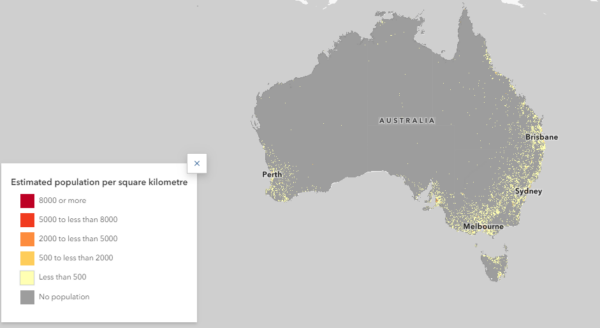
you can see that the inland population of Australia is so sparse that the need for a service like this one becomes readily apparent.
Over nearly a century of service, the RFDS has become an integral part of Australia’s healthcare system serving more than 387,000 people nationwide including an estimated 47,000 from its Alice Springs base annually. The service area for the Alice Springs base is 1,250,000 km² or, for my American friends, slightly larger than the combined area of Montana, Wyoming, South Dakota, North Dakota, and Nebraska.
Last stop the Alice Springs School of the Air
Drawing her inspiration from the RFDS use of radio for health presentations, Adelaide Miethke began trying to conceive ways to use that medium to address the educational isolation children in the outback encountered. Using short wave radio (or high frequency as the Aussies call it) to provide these opportunities, she established the Alice Springs School of the Air in 1951.
Serving a diverse student body that includes Indigenous and English language learners ranging from pre-K to Year Nine (approximately age 14), who have an “in school week” once per term and are visited annually at home by a teacher patrol, the students generally study with home tutors (their parents as often as not) to complete their assignments.
This video of a pair of famous visitors shows some of the challenges of those early days, a rather nervous princess, and one very specific cultural / language change.
But just as technology has changed, so has the school’s use of it. By the early part of the current century, the school had switched to online learning models and technology that now uses satellite dishes and internet connections. And when the COVID-19 pandemic struck, the Australian educational system had a well-established remote learning model upon which it could draw.
Finally, Supper
(Ridin’ down the highway / Goin’ to a show)
(A geographically inappropriate match)
It was a busy day but not too taxing either physically or intellectually and we had some time to recoup at the hotel that named its restaurant
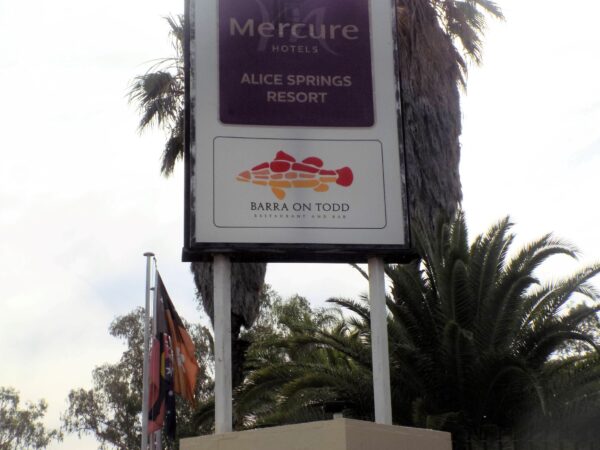
yes, Barra on Todd. That’s because it’s located near the (often dry) Todd River. (Of course, I milked this for much more than it was worth much to the consternation of M, our site coordinator and probably at least half of the group.)
I found it rather ironic that, given all the meals we did eat in hotels, this was one where we didn’t. Supper this night was a barbecue at Olive Pink Botanic Garden (about 5 minutes from the hotel). Before, during, and after our meal we had the privilege of having Barry Skipsey performing Outback Ballads. Of course he sang “We Are Australian” and “Waltzing Matilda” but it was also very much an evening of audience participation. Here’s a link to one of his compositions we sang along with (it’s not his performance that night but it’s quite similar.).
And to cap it off, here are the day’s remaining photos.
Great read!
Muito obrigado minha amiga.